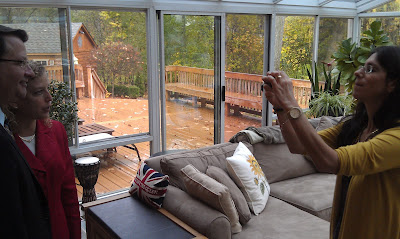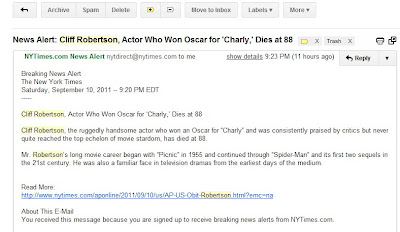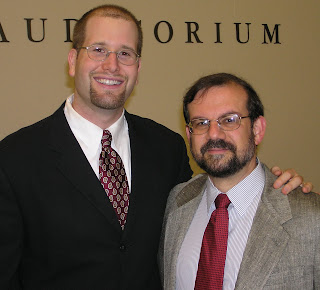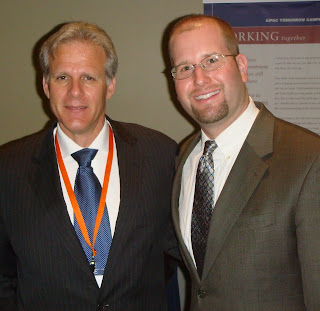Sally Whittle is a blogger in Lancashire, England. Her blog “Who’s the Mummy?” is one of approximately 4 million “mommy blogs” on the Web. Like many other young mothers she journals about her life as a mother and provides advice for other mothers around the world. With over 30,000 visitors a month, Whittle is used to receiving comments on her blog but she was surprised when she was offered a free trip to Israel with a handful of other popular mommy bloggers.
The group of mommy bloggers visited Israel this past July as part of VibeIsrael, a program of the apolitical non-profit Kinetis. The social startup seeks to generate domestic and global awareness of Israel as the capital of creative energy. Its founder and executive director Joanna Landau was recently in Metro Detroit to share her vision of how to brand Israel for the 21st century and how to market that brand as widely as possible.
Landau, a lawyer and start-up entrepreneur made aliyah with her family when she was five-years-old. Raised in a well-to-do philanthropic and Zionist home, she actively sought out a way to transition from her for-profit work into a non-profit passion. Her interest was piqued in 2004 when Israel’s Foreign Ministry launched the Brand Israel Project, which aimed to improve the country’s image abroad by downplaying religion and avoiding any discussion of the conflict with the Palestinians. Landau incorporated Kinetis in November 2009 seeding it with some of her own money and got to work on her re-branding Israel project.
While in Metro Detroit, Landau was eager to learn how the state’s “Pure Michigan” campaign was working to improve its image. She quickly noticed the similarities between Metro Detroit’s desire to retain talent by keeping its young people local after college and Israel’s desire to have its children choose to remain in Israel following army service. “Brazil is known for ‘fun’ and Paris is about ‘romance’ and America is connected to ‘freedom.’ When people around the world hear ‘Israel,’ they automatically think about politics and the conflict with the Palestinians,” Landau explains. Israel is all about ‘Creative Energy.’ This is what differentiates Israel as a country and Israelis as a nation. It represents the essence of Israel’s offering and encompasses the nation’s relative advantages in the fields of art and culture, technology and science, lifestyle, heritage and the environment.
Landau argues there is a misguided belief among Israelis that if they can only convince the rest of the world of the legitimacy of its political policies, then the tide will turn and there will be increased travel, investment and love of the Jewish State. “People are not interested in Israel beyond the conflict because we haven’t given them a reason to be interested. Whenever Israel gets a chance to say something, all we ever talk about is this conflict.”
When asked if Landau’s Kinetis is a new type of Israeli hasbara (public relations) organization, she laughs. “Hasbara is what you do when you feel you need to explain yourself? Only when you have done something wrong or if you’re unclear,” Landau clarifies. “In Israel we have been so consumed by crisis-management and self-defense that we have been unable to think of a long-term strategy.”
Landau wants a paradigm shift that will change the conversation. She believes that Creative Energy is in the DNA of Israelis. She wants to highlight her country’s high global appeal through a hi-tech, arts and culture, lifestyle, and extreme sports. “The Jewish religion is a very creative religion. Curiosity is encouraged and conventions are challenged,” she says. . “What we want to do is celebrate the things that Israel has to offer that are interesting on a global level,” she says. “Branding is about giving people something to relate to and connect to on an emotional level.”
It is Israel’s imperative to tell her own story and under Landau’s direction Kinetis has taken full advantage of modern technology to control the message. Its Facebook page features a video of Warren Buffet praising Israel as a place in the Middle East that might not have much oil, but it has an abundance in brains, energy, integrity and imagination. At the top of the Facebook page, there is a message that anyone can submit “an inspiring image or video that encapsulates “Creative Energy” about Israel and it will be posted on the page.
In addition to the cutting edge and attractive Facebook page, Kinetis boasts an impressive website available in both Hebrew and English that outlines its many programs all with the goal of place branding Israel in the most positive ways. Drawing upon the success of the book “Start-Up Nation” by Dan Senor and Saul Singer, Kinetis offers an academic program for Israeli students and international students from around the globe. These students in the Start-Up Nation Awareness Program (SNAP) will investigate the sources of Israel’s creative and entrepreneurial spirit across numerous spheres. Ultimately, their connection to Israel will help develop Israel as a model to be taught in leading universities worldwide.
The VibeIsrael program provides an all-expenses-paid personalized experience of Israel like the one set up for the mommy bloggers. These groups of opinion leaders include bird watchers, digital photographers, women entrepreneurs, extreme sports enthusiasts, archeologists, members of the fashion industry, technologists, and gourmet chefs. Participants are offered a glimpse into real Israeli life by connecting them with their Israeli counterparts. Rather than spend a week touring all of the typical tourist locations, VibeIsrael participants travel the country with locals who show them places relevant to their interests. These thought leaders then return home where they publish a critical mass of posts, blogs and articles in the printed media and on the Internet which convey an authentic, unadulterated “buzz” about what Israel truly offers.
Israel is a thriving nation made up of citizens who are proud of its accomplishments and offerings. Landau is working to highlight Israel’s best assets to the rest of the world. Through place branding and exploiting new media, every day she is raising the awareness of Israel as the creative energy capital of the world. With the help of technology and drawing on the clout of those with loud voices in the digital age, Kinetis is quickly positioning Israel as a center of excellence in the fields of innovation, creativity, and entrepreneurship.
After returning from her visit to Israel with VibeIsrael, Whittle blogged “What I saw in Israel was an irrepressible sense of possibility. And going forward that means I will always approach any political story about Israel with that memory in mind – the memory of the people we met, the experiences we had, and the fun we shared.”














